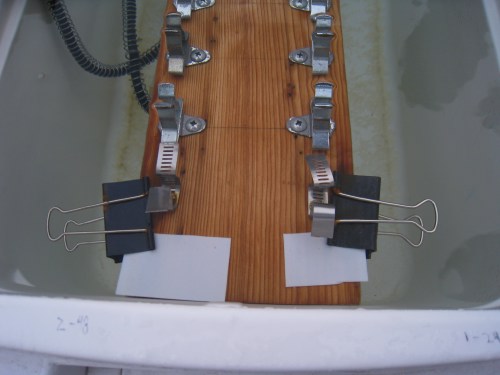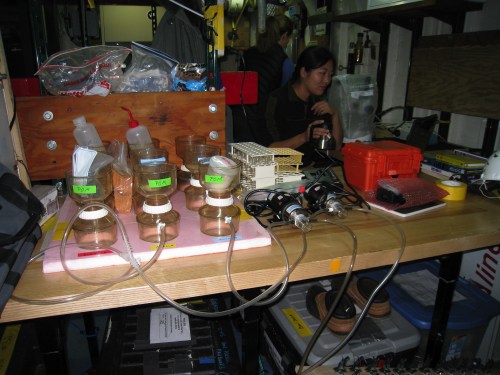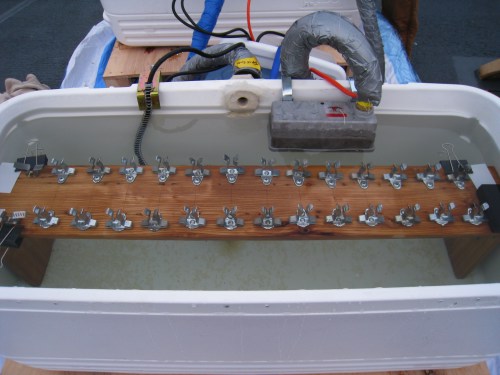Location: Lat: 77 37.369 N Long: 164 40.738 W
Sunrise: 9:57am Sunset: 7:25 pm
Today is another day of transit, we are heading back towards the southwest. I thought I would take this opportunity to give an overview of some of the other things going on aboard the Polar Sea.
The team from Southern Illinois University is here to look at samples of sea water and how they might be affected by changes in the sea ice. Their project involves collecting water using a CTDA research tool that is submerged in the water to measure conductivity (salinity), temperature, and depth. device. (See journal from 10 02 09 for a picture). CTDA research tool that is submerged in the water to measure conductivity (salinity), temperature, and depth. stands for conductivity, temperature and depth. It has 24 tubes that can each hold 10 liters of water. They can be opened and closed at different depths. The team is using it to collect water from three different depths - 2 meters, 50 meters, and 100 meters. It takes only about 20 minutes to collect the water samples. At the same time while they are collecting water samples, they are also using a fluorometer, which is a device that measure the amount of light that passes through the water.
Once they have all of the water samples, they filter the water using the set-up shown below:

They filter for three different substances. One thing they are looking for is particulate organic matter, which refers to any living organisms in the water such as phytoplankton (plankton that can make it's own food from light like plants), zooplankton (plankton that eats other microorganisms), and algae. They are also looking for stable isotopes and fatty acids. Finally, they are filtering for chlorophyll in the water.
They also have another experiment set-up on the fos'cal (the outside area in the front of the boat). This experiment is looking at how different amounts of UV light affects the amount of course dissolved organic matter.
They have coolers set-up with test-tube racks to place the samples in. You can see water in the coolers - this is water that is kept warm enough to prevent the samples from freezing.

The samples will then be exposed to different amounts of UV light - 24 hours, 48 hours or 72 hours. This part will be challenging as we get towards the latter part of the trip and the number of daylight hours decrease. The hours do no have to be continuous, but need to add up to the correct total number of hours.

After being exposed for the correct number of hours, the samples will be wrapped in foil (to prevent further light exposure) and then analyzed back at Southern Illinois University.
Sounds of the Arctic
Here is another sound of the arctic. This is a sound we have been looking forward to all week. This is one of the moral boosters they have on board. 


Comments